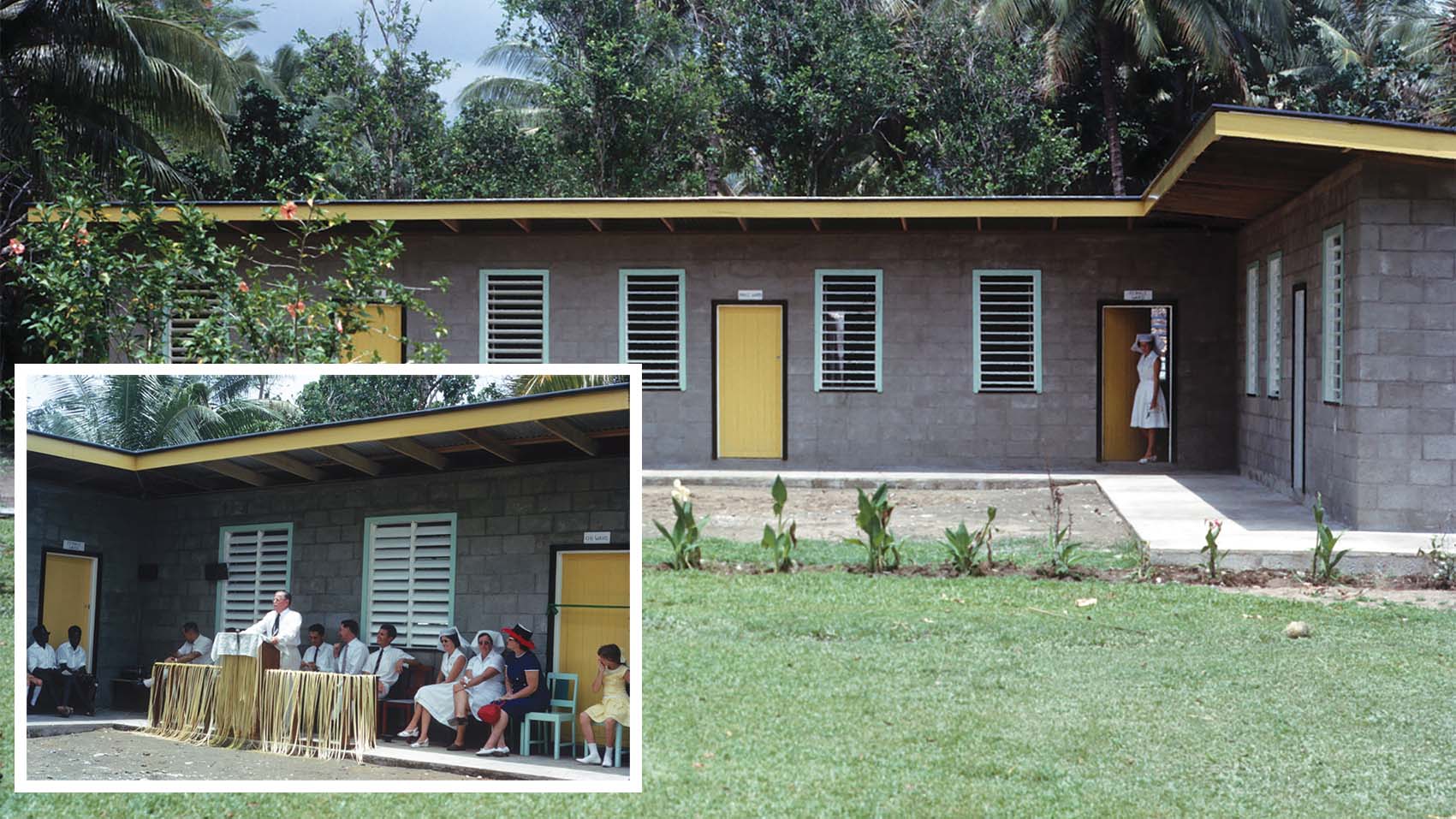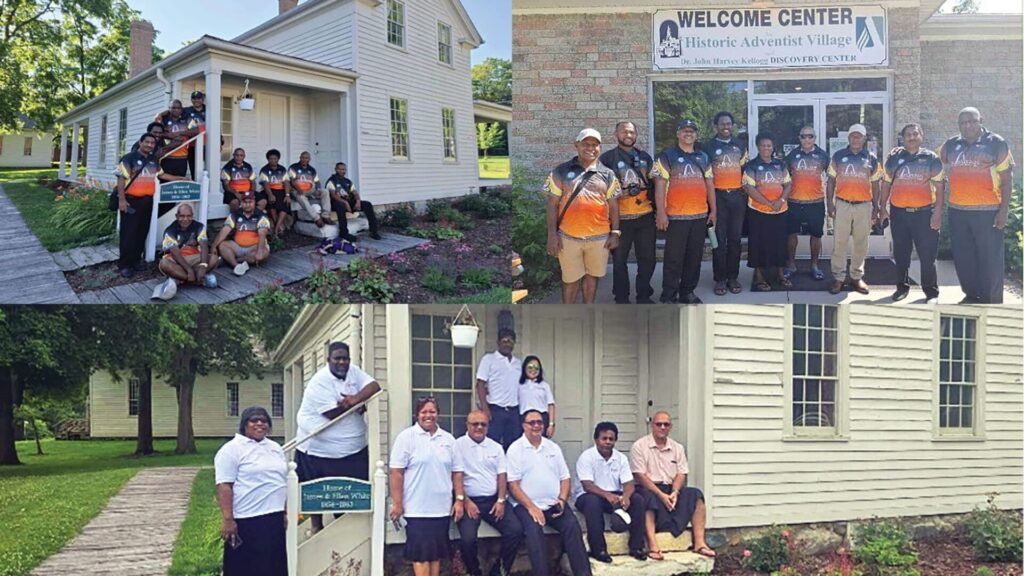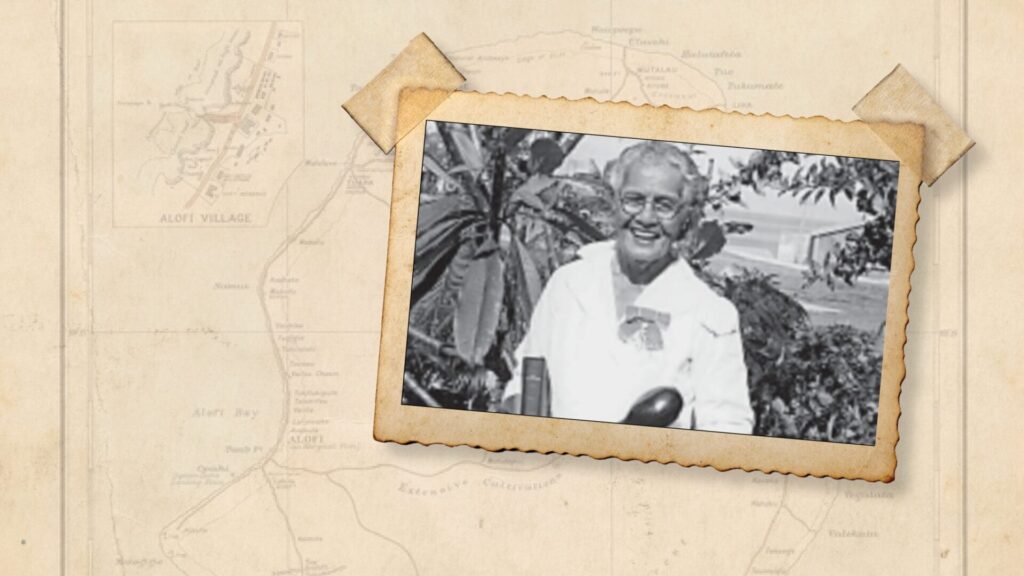Kasterita Hospital operated from the 1950s until 2014 at Inus on the island of Bougainville, Papua New Guinea. From the time Seventh-day Adventists arrived on the island of Bougainville in 1924, a significant part of their mission involved providing health care services and promoting healthful living. The Bougainville Mission, formally organised in 1953, located its headquarters at Inus on the northeastern coast of the main island. Inus had been the site of the Church’s first mission station in the region in 1928, mainly because of its safe anchorage for mission ships. The president of the newly organised mission, Pastor Cyril Pascoe, along with his wife, Marie, had served on Bougainville from May 1939 until forced out early in 1942 by the Japanese invasion. Pastor Pascoe returned to Bougainville as district director in 1948 and began the restoration of the facilities that the war had destroyed.
After a brief absence he came back to Inus in 1951. One of the buildings added to the new headquarters was a small three-roomed clinic with a cement floor, corrugated iron roof and plaited bamboo walls. The clinic made it possible to improve the quality of the medical care offered, although the mission staff had little medical training. The Pascoes, as was common for many missionaries of the time, had received just a few weeks of basic instruction in tropical medicine. The clinic provided medical care to the local population as well as those from the neighbouring villages and the local plantation.
After the Pascoes left Bougainville, Lester Lock served as president of the Bougainville Mission from 1957 to 1959, and his wife Edna, a trained nurse, expanded the services that the clinic offered. From 1960 to 1966 Margaret Watts, an Australian registered nurse and wife of Pastor Horrie Watts, Bougainville Mission president, and Ruth Matapao, a local Adventist whom Margaret trained as a nurse assistant, ran the clinic.
During the Australian Administration of PNG, the government provided medical supplies without charge to the various medical facilities on Bougainville, including the clinic at Inus. The colonial government also appointed a district medical officer for Bougainville and an infant and maternal welfare Sister (nurse) to provide oversight of the health care offered.
The clinic at Inus provided emergency treatment for infections and injuries, suturing, setting of broken limbs, treatment of ulcers and many other tropical skin diseases, and as much assistance as possible during outbreaks of measles, whooping cough, dysentery and influenza. It helped with malaria, pneumonia and many undiagnosed but serious illnesses that would respond to penicillin. Pastor Watts provided a much-in-demand dental service. The number of babies delivered continued to increase and clinic staff offered classes in hygiene, pre-natal health and childcare. In particularly challenging medical cases, clinic staff consulted by radio with doctors at the government hospitals in Sohano and Kieta, and the Catholic hospital in Teopasina.
By the 1960s the small clinic proved less and less adequate for the demands made upon it. Its utility room, measuring 1.8m x 3.6m, served as the outpatient clinic, treating up to 60 people a day. The demands on the obstetric ward were overwhelming. For several years the mission drew up plans and gradually raised funds to build a new hospital. In 1966 Horrie Watts, with the help of Pastor Wilfred Billy, completed a new 12-bed hospital built of cement blocks. The well-equipped structure had an outpatient clinic, a dedicated obstetric wing and nursery, and a general ward. The opening ceremony on October 11, 1966, demonstrated the importance to the local community of the enhanced facility. Hundreds of local people, both Adventist and those from the wider community, attended the event.
Through the ensuing years, “Kastiorita Hospital,” as the new building became known, continued to offer significant medical care to the district. Margaret Trim, another Australian registered nurse and wife of Pastor Ray Trim, had charge of the hospital during the time her husband served as the president of the Bougainville Mission (1967-1968). However, as the 1970s progressed, the facility gradually came to operate only as a clinic. But its role became less crucial, first because of the improvement in road transport to the larger medical facilities, and then with the transfer of the mission headquarters to Rumba in 1972.
The clinic continued to operate with some government funding after PNG became independent in 1975. It functioned as “Kasterita Clinic” until 1995, even during the upheaval of the 10-year civil war on Bougainville. By 2003 the Seventh-day Adventist Year Book categorised it as an Aidpost, and ceased to list it after 2014. The building opened in 1966 still stands.
This is an exceprt from an entry in the Encyclopedia of Seventh-day Adventists. Read online here.






